Ziagen side effects. Ziagen (Abacavir): Uses, Side Effects, and Important Warnings for HIV Treatment
What are the key uses of Ziagen (abacavir) in HIV treatment. How does abacavir work to combat HIV infection. What are the most serious side effects and warnings associated with taking abacavir. Who should not take abacavir due to potential risks.
Understanding Abacavir (Ziagen): A Crucial HIV Medication
Abacavir, sold under the brand name Ziagen, is an essential antiretroviral medication used in the treatment of HIV infection. As a nucleoside reverse transcriptase inhibitor (NRTI), abacavir plays a vital role in combination therapy regimens for managing HIV in adults and children. To fully grasp its significance, it’s important to explore its uses, mechanisms, and critical safety considerations.
Key Facts About Abacavir
- Drug class: Nucleoside Reverse Transcriptase Inhibitor (NRTI)
- Brand names: Ziagen, Epzicom (combination with lamivudine), Triumeq (combination with dolutegravir and lamivudine)
- Available forms: 300 mg tablets and 20 mg/mL oral solution
- Approved for: Treatment of HIV infection in adults and children
The Role of Abacavir in HIV Treatment
Abacavir is a cornerstone of many HIV treatment regimens. It works by inhibiting the reverse transcriptase enzyme, which HIV uses to replicate its genetic material. By interfering with this process, abacavir helps to slow the progression of HIV infection and reduce viral load.
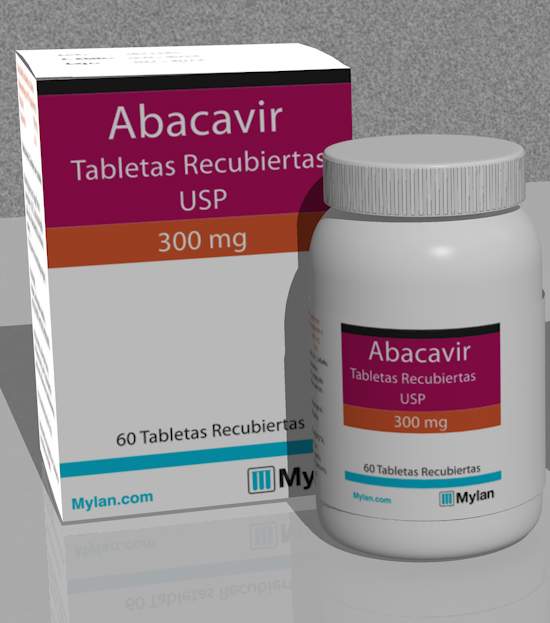
Is abacavir used alone in HIV treatment? No, abacavir is always used in combination with other antiretroviral medications. This approach, known as combination antiretroviral therapy (cART), is essential for effectively suppressing HIV replication and preventing the development of drug resistance.
Critical Safety Warnings: Hypersensitivity Reactions
One of the most crucial aspects of abacavir use is the risk of potentially life-threatening hypersensitivity reactions. These allergic reactions can occur in individuals with a specific genetic variation called HLA-B*5701.
Can the risk of abacavir hypersensitivity be predicted? Yes, a genetic test can determine if a patient carries the HLA-B*5701 allele. This screening is typically performed before initiating abacavir therapy to identify individuals at higher risk for severe reactions.
Symptoms of Abacavir Hypersensitivity
Patients taking abacavir must be vigilant for signs of hypersensitivity, which may include:
- Fever
- Rash
- Nausea, vomiting, or diarrhea
- Abdominal pain
- Extreme fatigue or achiness
- Shortness of breath, cough, or sore throat
If two or more symptom groups occur, immediate medical attention is necessary. Patients who experience a hypersensitivity reaction must never take abacavir or any abacavir-containing medications again, as subsequent exposure can result in severe, potentially fatal reactions.
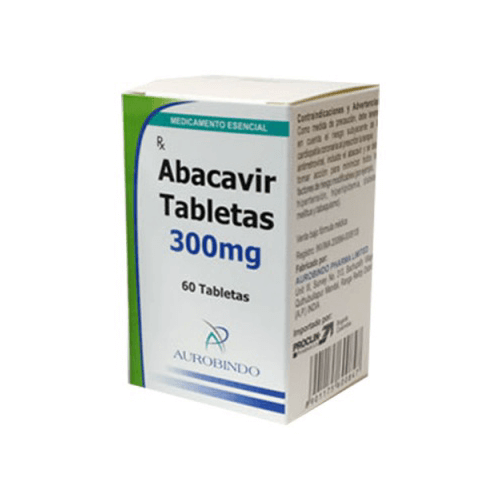
Lactic Acidosis: A Serious Metabolic Complication
Another significant concern associated with abacavir use is the risk of lactic acidosis, a dangerous buildup of lactic acid in the blood. This condition can be life-threatening if not promptly addressed.
How does lactic acidosis manifest in patients taking abacavir? Symptoms may include:
- Unusual muscle pain or weakness
- Shortness of breath or rapid breathing
- Stomach discomfort with nausea and vomiting
- Cold or blue extremities
- Dizziness or lightheadedness
- Abnormal heart rhythms
Patients experiencing these symptoms should seek immediate medical attention, as early intervention is crucial in managing lactic acidosis.
Hepatotoxicity: Monitoring Liver Health
Abacavir use has been associated with liver problems in some patients. Regular monitoring of liver function is essential for individuals taking this medication.
What are the warning signs of liver issues related to abacavir use? Patients should be alert for:
- Jaundice (yellowing of the skin or eyes)
- Dark urine
- Light-colored stools
- Persistent loss of appetite
- Nausea or vomiting
- Pain in the right upper abdomen
- Itching
Any of these symptoms warrant prompt medical evaluation to assess liver function and determine if changes to the treatment regimen are necessary.

Proper Administration and Dosage Considerations
Adhering to the prescribed dosage and administration guidelines is crucial for maximizing the benefits of abacavir while minimizing risks.
Available Forms and Dosages
- Tablets: 300 mg
- Oral solution: 20 mg/mL (strawberry-banana flavored)
How should abacavir be taken? The medication can be taken with or without food. For adults, the typical dosage is 600 mg daily, often administered as 300 mg twice daily or 600 mg once daily. Pediatric dosing is based on weight and should be determined by a healthcare provider.
Drug Interactions and Contraindications
Understanding potential drug interactions and contraindications is essential for safe and effective use of abacavir.
Are there medications that should not be taken with abacavir? Yes, certain drugs may interact with abacavir, potentially altering its effectiveness or increasing the risk of side effects. These may include:
- Methadone
- Ribavirin
- Certain antiretroviral medications
Patients should always inform their healthcare provider about all medications, supplements, and herbal products they are taking to avoid potential interactions.

Contraindications
Abacavir is contraindicated in individuals who:
- Have tested positive for the HLA-B*5701 allele
- Have had a previous hypersensitivity reaction to abacavir
- Have moderate or severe hepatic impairment
Special Populations: Considerations for Pregnancy and Breastfeeding
The use of abacavir in pregnant and breastfeeding individuals requires careful consideration and monitoring.
Can abacavir be used during pregnancy? While data on abacavir use in pregnancy is limited, it is generally considered acceptable when the potential benefits outweigh the risks. Healthcare providers will carefully weigh the need for HIV treatment against potential risks to the developing fetus.
Is it safe to breastfeed while taking abacavir? The Centers for Disease Control and Prevention (CDC) recommends that individuals with HIV in the United States avoid breastfeeding to prevent HIV transmission to the infant. In resource-limited settings, the World Health Organization (WHO) provides guidance on antiretroviral use during breastfeeding.

Long-Term Management and Monitoring
Successful long-term use of abacavir requires ongoing medical supervision and patient vigilance.
Regular Health Assessments
What types of monitoring are necessary for patients on abacavir? Healthcare providers typically recommend:
- Regular HIV viral load and CD4 count tests
- Liver function tests
- Screening for cardiovascular risk factors
- Monitoring for signs of hypersensitivity reactions, especially in the first few weeks of treatment
Patient Education and Support
Educating patients about the importance of adherence, potential side effects, and when to seek medical attention is crucial for optimal outcomes. Support groups and counseling services can also play a valuable role in helping individuals manage their HIV treatment effectively.
How can patients ensure they’re taking abacavir safely and effectively? Key strategies include:
- Taking the medication exactly as prescribed
- Keeping all scheduled medical appointments
- Reporting any new symptoms or side effects promptly
- Carrying the abacavir Warning Card at all times
- Informing all healthcare providers about their abacavir use
By following these guidelines and maintaining open communication with their healthcare team, patients can maximize the benefits of abacavir while minimizing potential risks.

Abacavir – Patient | NIH
Audio
Your browser does not support the audio element.
drug-audio-en-257.mp3
| drug-audio-en-257.mp3 |
Pronounce:
Abacavir
Brand Name
Ziagen
Other Names
ABC, abacavir sulfate
Drug Class
Nucleoside Reverse Transcriptase Inhibitor (NRTIs)
Drug Image(s): (Click to enlarge)
What are the most important things to know about abacavir? What are the most important things to know about abacavir?
What are the most important things to know about abacavir?
Abacavir can cause serious, life-threatening side effects. These include allergic reactions, a buildup of lactic acid in the blood (lactic acidosis), and liver problems.
People who take abacavir may have a serious allergic reaction (hypersensitivity reaction) that can cause death. Your risk of this allergic reaction is much higher if you have a gene variation called HLA-B*5701. Your health care provider can determine if you have this gene variation with a blood test.
Your health care provider can determine if you have this gene variation with a blood test.
If you get a symptom from two or more of the following groups while taking abacavir, contact your health care provider right away to find out if you should stop taking abacavir.
- Group 1 Symptoms: Fever
- Group 2 Symptoms: Rash
- Group 3 Symptoms: Nausea, vomiting, diarrhea, abdominal (stomach area) pain
- Group 4 Symptoms: General ill feeling, extreme tiredness, or achiness
- Group 5 Symptoms: Shortness of breath, cough, sore throat
Your pharmacist will give you a Warning Card with a list of these symptoms. Carry this Warning Card with you at all times.
If you stop taking abacavir because of an allergic reaction, never take abacavir or any other abacavir-containing medicine again. (These combination HIV medicines also contain abacavir: abacavir/lamivudine [brand name: Epzicom], abacavir/lamivudine/zidovudine [brand name: Trizivir], and abacavir/dolutegravir/lamivudine [brand names: Triumeq, Triumeq PD]./lamictal-and-anxiety-380251_final-d213a02e86a24d67a08b83ab28b36e8c.png) )
)
If you take abacavir or any other abacavir-containing medicine again after you have had an allergic reaction to abacavir, within hours you may get life-threatening symptoms that may include very low blood pressure or death.
If you stop taking abacavir for any other reason, even for a few days, and you are not allergic to abacavir, talk with your health care provider before taking it again. Taking abacavir again can cause a serious allergic or life-threatening reaction, even if you never had an allergic reaction to it before. If your health care provider tells you that you can take abacavir again, start taking it when you are around medical help or people who can call a health care provider if you need one.
Contact your health care provider right away if you have any of the following symptoms that could be signs of lactic acidosis:
- Weakness or tiredness
- Unusual muscle pain
- Shortness of breath or fast breathing
- Stomach pain with nausea and vomiting
- Cold or blue hands and feet
- Dizziness or lightheadedness
- Fast or abnormal heartbeat
Contact your health care provider right away if you have any of the following symptoms that could be signs of liver problems:
- Yellowing of your skin or the whites of your eyes (jaundice)
- Dark-colored urine
- Light-colored bowel movements
- Loss of appetite for several days or longer
- Nausea or vomiting
- Pain, aching, or tenderness on the right side of your stomach/abdominal area
- Itching
While taking abacavir, it is important to keep all of your appointments with your health care provider.
What is abacavir?What is abacavir?
What is abacavir?
Abacavir (brand name: Ziagen) is a prescription medicine approved by the U.S. Food and Drug Administration (FDA) for the treatment of HIV infection in adults, children, and infants. Abacavir is always used in combination with other HIV medicines.
For more information on the use of abacavir in people with HIV, please refer to the Guidelines for the Use of Antiretroviral Agents in Adults and Adolescents with HIV and the Guidelines for the Use of Antiretroviral Agents in Pediatric HIV Infection.
HIV medicines cannot cure HIV/AIDS, but taking HIV medicines every day helps people with HIV live longer, healthier lives. HIV medicines also reduce the risk of HIV transmission. If you are taking HIV medicines, do not cut down on, skip, or stop taking them unless your health care provider tells you to.
What should I tell my health care provider before taking abacavir?What should I tell my health care provider before taking abacavir?
What should I tell my health care provider before taking abacavir?
Before taking abacavir, tell your health care provider:
How should I take abacavir?How should I take abacavir?
How should I take abacavir?
Abacavir comes in the following forms and strengths:
- 300-mg tablets
- 20-mg/mL oral solution (a strawberry banana-flavored liquid available for infants, children, and adults who cannot swallow tablets)
Take abacavir according to your health care provider’s instructions. Do not miss a dose of abacavir, and do not change your dose or stop taking abacavir without first talking with your health care provider.
Do not miss a dose of abacavir, and do not change your dose or stop taking abacavir without first talking with your health care provider.
Take abacavir by mouth with or without food.
If your child is prescribed abacavir, your child’s health care provider will decide the right dose of abacavir based on your child’s weight. The health care provider will also decide whether your child should take the tablet or liquid form of abacavir.
Always take abacavir in combination with other HIV medicines.
If you have taken too much abacavir, contact your health care provider or local poison control center (1-800-222-1222) right away, or go to the nearest hospital emergency room.
For more information on how to take abacavir, see the FDA drug label.
What should I do if I forget a dose?What should I do if I forget a dose?
What should I do if I forget a dose?
If you miss a dose of abacavir, take the missed dose as soon as you remember it. But if it is almost time for your next dose, skip the missed dose and just take your next dose at the regular time. Do not take two doses at the same time to make up for a missed dose.
Do not take two doses at the same time to make up for a missed dose.
What side effects can abacavir cause?What side effects can abacavir cause?
What side effects can abacavir cause?
Abacavir may cause side effects. Some side effects of abacavir can be serious as noted above. Many side effects from HIV medicines, such as nausea or occasional dizziness, are manageable. See the HIVinfo fact sheet on HIV Medicines and Side Effects for more information.
Other possible side effects of abacavir include:
- Changes in your immune system (called immune reconstitution inflammatory syndrome or IRIS). IRIS is a condition that sometimes occurs when the immune system begins to recover after treatment with an HIV medicine. As the immune system gets stronger, it may have an increased response to a previously hidden infection.
- Increased risk of heart attack (myocardial infarction).
Tell your health care provider if you have any side effect that bothers you or that does not go away.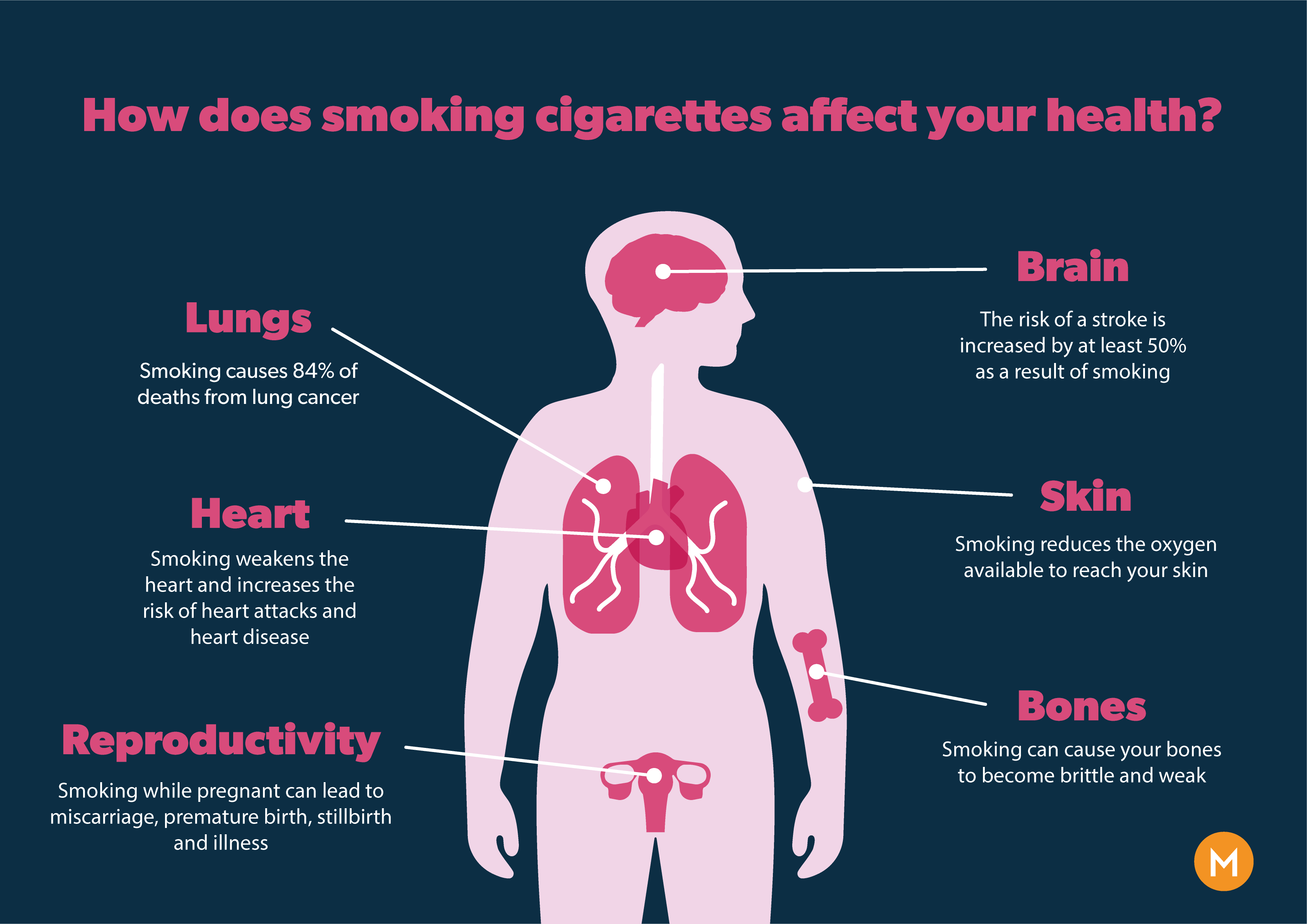
These are not all the possible side effects of abacavir. To learn more about possible side effects of abacavir, read the drug label or package insert or talk to your health care provider or pharmacist.
You can report side effects to FDA at 1-800-FDA-1088 (1-800-332-1088) or online.
How should abacavir be stored?How should abacavir be stored?
How should abacavir be stored?
- Store abacavir tablets at room temperature, 68°F to 77°F (20°C to 25°C).
- Abacavir oral solution may be refrigerated or stored at room temperature. Do not freeze abacavir oral solution.
- Keep abacavir in the container that it came in and keep the container tightly closed.
- Do not use abacavir if the original seal over the container opening is broken or missing.
- Throw away abacavir that is no longer needed or expired (out of date). Follow FDA guidelines on how to safely dispose of unused medicines.
- Keep abacavir and all medicines out of reach of children.

Where can I find more information about abacavir?Where can I find more information about abacavir?
Where can I find more information about abacavir?
- For more information on the use of abacavir in people with HIV, please refer to the Guidelines for the Use of Antiretroviral Agents in Adults and Adolescents with HIV and the Guidelines for the Use of Antiretroviral Agents in Pediatric HIV Infection.
- This Patient Version drug summary is based on the following FDA label(s): Solution, tablet (film coated). The Medication Guide includes information for people taking abacavir.
- The American Hospital Formulary Service (AHFS) Patient Medication Information for abacavir available from MedlinePlus.
- Abacavir-related research studies, from ClinicalTrials.gov. (The ClinicalTrials.gov search can be modified so that you can get results that better match your interests. To learn more about the ClinicalTrials.
 gov search features, please see How to Search.)
gov search features, please see How to Search.) - A list of FDA-approved HIV medicines, from HIVinfo.
Manufacturer Information
ViiV Healthcare
Main number: 877-844-8872
Patient assistance (ViiV Connect): 844-588-3288
Last Reviewed: January 10, 2023
home message
Ziagen Oral: Uses, Side Effects, Interactions, Pictures, Warnings & Dosing
Warnings:
In some patients, abacavir has caused a serious (sometimes fatal) allergic reaction. Your doctor should order a blood test to measure your risk before you start this medication or take it again. If the blood test shows you are at greater risk, you should not take this medication and your doctor should discuss other treatment choices with you. Symptoms of an allergic reaction may include any of the following: rash, itching/swelling (especially of the face/tongue/throat), severe dizziness, trouble breathing, fever, extreme tiredness, nausea, vomiting, diarrhea, stomach pain, muscle aches, sore throat, or cough. Get medical help right away if you experience any of these symptoms. If you have stopped taking abacavir because of an allergic reaction, you must never take any form of abacavir again, or death could result. Tell all of your doctors and pharmacists if you have stopped taking abacavir due to an allergic reaction. Also, properly throw away any unused abacavir. Read the warning card provided with this medication for more details.
Get medical help right away if you experience any of these symptoms. If you have stopped taking abacavir because of an allergic reaction, you must never take any form of abacavir again, or death could result. Tell all of your doctors and pharmacists if you have stopped taking abacavir due to an allergic reaction. Also, properly throw away any unused abacavir. Read the warning card provided with this medication for more details.
Warnings:
In some patients, abacavir has caused a serious (sometimes fatal) allergic reaction. Your doctor should order a blood test to measure your risk before you start this medication or take it again. If the blood test shows you are at greater risk, you should not take this medication and your doctor should discuss other treatment choices with you. Symptoms of an allergic reaction may include any of the following: rash, itching/swelling (especially of the face/tongue/throat), severe dizziness, trouble breathing, fever, extreme tiredness, nausea, vomiting, diarrhea, stomach pain, muscle aches, sore throat, or cough. Get medical help right away if you experience any of these symptoms. If you have stopped taking abacavir because of an allergic reaction, you must never take any form of abacavir again, or death could result. Tell all of your doctors and pharmacists if you have stopped taking abacavir due to an allergic reaction. Also, properly throw away any unused abacavir. Read the warning card provided with this medication for more details.
Get medical help right away if you experience any of these symptoms. If you have stopped taking abacavir because of an allergic reaction, you must never take any form of abacavir again, or death could result. Tell all of your doctors and pharmacists if you have stopped taking abacavir due to an allergic reaction. Also, properly throw away any unused abacavir. Read the warning card provided with this medication for more details.
… Show More
Uses
This drug is used with other HIV medications to help control HIV infection. It helps to decrease the amount of HIV in your body so your immune system can work better. This lowers your chance of getting HIV complications (such as new infections, cancer) and improves your quality of life. Abacavir belongs to a class of drugs known as nucleoside reverse transcriptase inhibitors-NRTI.Abacavir is not a cure for HIV infection. To decrease your risk of spreading HIV disease to others, continue to take all HIV medications exactly as prescribed by your doctor. Use an effective barrier method (latex or polyurethane condoms/dental dams) during sexual activity as directed by your doctor. Do not share personal items (such as needles/syringes, toothbrushes, and razors) that may have contacted blood or other body fluids. Consult your doctor or pharmacist for more details.
Use an effective barrier method (latex or polyurethane condoms/dental dams) during sexual activity as directed by your doctor. Do not share personal items (such as needles/syringes, toothbrushes, and razors) that may have contacted blood or other body fluids. Consult your doctor or pharmacist for more details.
How to use Ziagen
Read the Medication Guide and Warning Card provided by your pharmacist before you start taking abacavir and each time you get a refill. Carry the Warning Card with you at all times. If you have any questions, ask your doctor or pharmacist.
Take this medication by mouth with or without food as directed by your doctor, usually 1 or 2 times daily. If you are using the liquid form of this medication, carefully measure the dose using a special measuring device/spoon. Do not use a household spoon because you may not get the correct dose.
The dosage is based on your medical condition and response to treatment. In children, the dosage is also based on weight.
If you stop using abacavir even for a short time and then restart the drug, you have an increased chance of developing a very serious (possibly fatal) allergic reaction. Refill your medication before you run out. Do not stop treatment unless directed by your doctor. Before restarting abacavir, consult your doctor or pharmacist, and be sure you have easy access to medical care.
It is very important to continue taking this medication (and other HIV medications) exactly as prescribed by your doctor. Do not skip any doses. Do not increase your dose, take this drug more often than prescribed, or stop taking it (or other HIV medicines) even for a short time unless directed to do so by your doctor. Skipping or changing your dose without approval from your doctor may cause the amount of virus to increase, make the infection more difficult to treat (resistant), or worsen side effects.
For the best effect, take this medication at evenly spaced times. To help you remember, take this medication at the same time(s) every day.
Side Effects
See also Warning and How to Use sections.
Trouble sleeping or loss of appetite may occur. If any of these effects last or get worse, tell your doctor or pharmacist promptly.
Remember that this medication has been prescribed because your doctor has judged that the benefit to you is greater than the risk of side effects. Many people using this medication do not have serious side effects.
As your immune system gets stronger, it can begin to fight off infections you already had, possibly causing disease symptoms to come back. You could also have symptoms if your immune system becomes overactive. This reaction may happen at any time (soon after starting HIV treatment or many months later). Get medical help right away if you have any serious symptoms, including: unexplained weight loss, severe tiredness, muscle aches/weakness that doesn’t go away, headaches that are severe or don’t go away, joint pain, numbness/tingling of the hands/feet/arms/legs, vision changes, signs of infection (such as fever, chills, swollen lymph nodes, trouble breathing, cough, non-healing skin sores), signs of an overactive thyroid (such as irritability, nervousness, heat intolerance, fast/pounding/irregular heartbeat, bulging eyes, unusual growth in the neck/thyroid known as a goiter), signs of a certain nerve problem known as Guillain-Barre syndrome (such as unsteadiness, loss of coordination, trouble swallowing/speaking/chewing, trouble moving your eyes).
Tell your doctor right away if you have any serious side effects, including: mental/mood changes (depression, anxiety).
Rarely, this medication has caused severe (sometimes fatal) liver problems and a buildup of lactic acid in the blood (lactic acidosis). These serious side effects may occur more often in women and obese patients. Get medical help right away if you have any of the following serious symptoms, including: symptoms of liver problems (such as nausea/vomiting that doesn’t stop, stomach/abdominal pain, yellowing eyes/skin, dark urine), symptoms of lactic acidosis (such as deep/rapid breathing, drowsiness, nausea/vomiting).
This is not a complete list of possible side effects. If you notice other effects not listed above, contact your doctor or pharmacist.
In the US – Call your doctor for medical advice about side effects. You may report side effects to FDA at 1-800-FDA-1088 or at www.fda.gov/medwatch.
In Canada – Call your doctor for medical advice about side effects. You may report side effects to Health Canada at 1-866-234-2345.
You may report side effects to Health Canada at 1-866-234-2345.
Precautions
See also Warning and How to Use sections.
Before taking abacavir, tell your doctor or pharmacist if you are allergic to it; or if you have any other allergies. This product may contain inactive ingredients, which can cause allergic reactions or other problems. Talk to your pharmacist for more details.
Before using this medication, tell your doctor or pharmacist your medical history, especially of: liver problems (such as hepatitis B or C, or cirrhosis), kidney problems, alcohol use.
Abacavir may increase your risk of a heart attack. Discuss the risks and benefits of treatment with your doctor and ways to lower your risk of heart disease. Tell your doctor if you have heart problems, if you smoke, or if you have other conditions that increase your risk of heart disease such as high blood pressure, diabetes, or high cholesterol levels.
Before having surgery, tell your doctors or dentist about all the products you use (including prescription drugs, nonprescription drugs, and herbal products).
Tell your doctor if you are pregnant before using this medication. Treatment can lower the risk of passing HIV infection to your baby. Discuss the risks and benefits with your doctor.
This medication passes into breast milk. Because breast milk can transmit HIV, do not breast-feed.
Interactions
Drug interactions may change how your medications work or increase your risk for serious side effects. This document does not contain all possible drug interactions. Keep a list of all the products you use (including prescription/nonprescription drugs and herbal products) and share it with your doctor and pharmacist. Do not start, stop, or change the dosage of any medicines without your doctor’s approval.
Some products that may interact with this drug include: alcohol, methadone, orlistat.
This medication must not be taken with other medications that contain abacavir. Check the labels on all your other prescription medications to make sure they do not contain abacavir. If you have any questions, consult your doctor or pharmacist.
If you have any questions, consult your doctor or pharmacist.
Does Ziagen interact with other drugs you are taking?
Enter your medication into the WebMD interaction checker
Overdose
If someone has overdosed and has serious symptoms such as passing out or trouble breathing, call 911. Otherwise, call a poison control center right away. US residents can call their local poison control center at 1-800-222-1222. Canada residents can call a provincial poison control center.
Do not share this medication with others.
Lab and/or medical tests (such as liver function, viral load, T-cell counts) should be done while you are taking this medication. Keep all medical and lab appointments. Consult your doctor for more details.
If you miss a dose, take it as soon as you remember. If it is near the time of the next dose, skip the missed dose. Take your next dose at the regular time. Do not double the dose to catch up.
Store abacavir solution or tablets at room temperature away from light and moisture. Abacavir solution may also be stored in the refrigerator. Do not freeze. The solution may turn from a clear or yellow color to a brown color over time. Do not store in the bathroom. Keep all medications away from children and pets.
Abacavir solution may also be stored in the refrigerator. Do not freeze. The solution may turn from a clear or yellow color to a brown color over time. Do not store in the bathroom. Keep all medications away from children and pets.
Do not flush medications down the toilet or pour them into a drain unless instructed to do so. Properly discard this product when it is expired or no longer needed. Consult your pharmacist or local waste disposal company.
Images
Ziagen 300 mg tablet
Color: yellowShape: oblongImprint: GX 623 GX 623
This medicine is a yellow, oblong, scored, film-coated, tablet imprinted with “GX 623” and “GX 623”.
Ziagen 20 mg/mL oral solution
Color: yellowShape: Imprint:
This medicine is a yellow, oblong, scored, film-coated, tablet imprinted with “GX 623” and “GX 623”.
Next
Save up to 80% on your prescriptions.
Available coupons
Save up to 80% on your prescription with WebMDRx
Drug Survey
Are you currently using Ziagen?
This survey is being conducted by the WebMD marketing sciences department.
Selected from data included with permission and copyrighted by First Databank, Inc. This copyrighted material has been downloaded from a licensed data provider and is not for distribution, except as may be authorized by the applicable terms of use.
CONDITIONS OF USE: The information in this database is intended to supplement, not substitute for, the expertise and judgment of healthcare professionals. The information is not intended to cover all possible uses, directions, precautions, drug interactions or adverse effects, nor should it be construed to indicate that use of a particular drug is safe, appropriate or effective for you or anyone else. A healthcare professional should be consulted before taking any drug, changing any diet or commencing or discontinuing any course of treatment.
Abacavir – description of the substance, pharmacology, use, contraindications, formula
Contents
Structural formula
Russian name
English title
Latin name
chemical name
Gross formula
Pharmacological group of the substance Abacavir
Nosological classification
CAS code
pharmachologic effect
Characteristic
Pharmacology
Application of the substance Abacavir
Contraindications
Application restrictions
Use during pregnancy and lactation
Side effects of the substance Abacavir
Interaction
Dosage and administration
Precautionary measures
Trade names with the active substance Abacavir
Structural formula
Russian name
Abacavir
English name
Abacavir
Latin name
062 Abacaviri)
Chemical name
(1S,4R)-4-[2-Amino -6-(cyclopropylamino)-9H-purin-9-yl]-2-cyclopenten-1-methanol (as sulfate)
Gross formula
C 14 H 18 N 6 O
Pharmacological group of the substance Abacavir
Means for the treatment of HIV infection
Nosological classification
ICD-10 code list
CAS code
136470-78-5
Pharmacological action
Pharmacological action –
HIV reverse transcriptase inhibitor , antineoplastic, tyrosine kinase inhibitor , antiviral .
Characterization
Synthetic carbocyclic nucleoside analog. Abacavir sulfate is a white or almost white substance. Solubility in distilled water at 25°C is approximately 77 mg/ml. The partition coefficient octanol/water (pH 7.0-7.3) is approximately 1.20 at 25°C. Molecular weight 670.76 Da.
Pharmacology
Inhibits HIV-1 and HIV-2 reverse transcriptase. Causes RNA chain termination and stops virus replication. Rapidly and fairly completely absorbed after oral administration. Absolute bioavailability – 83%. max”>C max is reached after 1-1.5 hours and is about 3 µg/ml. Eating slows down absorption. In the blood, it binds to proteins, easily passes histohematic barriers (except for the BBB) and penetrates tissues, V d – 0.8 l / kg. It is metabolized in the liver with the participation of alcohol dehydrogenase and glucuronyl transferase. About 66% of the dose is excreted in the form of glucuronide conjugates (only 2% – unchanged) mainly by the kidneys (over 80%), partly – with faeces; T 1/2 – 1. 5 hours Does not accumulate. As part of combination therapy (combination with Azidothymidine and Epivir), it slows down the progression of HIV infection, reduces the frequency and severity of AIDS-associated diseases, improves the function of the immune system.
5 hours Does not accumulate. As part of combination therapy (combination with Azidothymidine and Epivir), it slows down the progression of HIV infection, reduces the frequency and severity of AIDS-associated diseases, improves the function of the immune system.
Use of the substance Abacavir
HIV infection (combination therapy).
Contraindications
Hypersensitivity.
Restrictions for use
Liver disease, early infancy (up to 3 months), breastfeeding.
Pregnancy and lactation use
FDA fetal category C.
Substance side effects Abacavir
Delayed-type hypersensitivity reactions (sometimes life threatening): fever, malaise, fatigue, gastrointestinal disturbances (dry in the mouth, nausea, vomiting, diarrhea, abdominal pain), cough, shortness of breath, lowering blood pressure, swelling and pain in the joints, headache, weakness, sleep disturbances, loss of appetite, hepatomegaly, liver steatosis, pancreatitis, lactic acidosis, rash.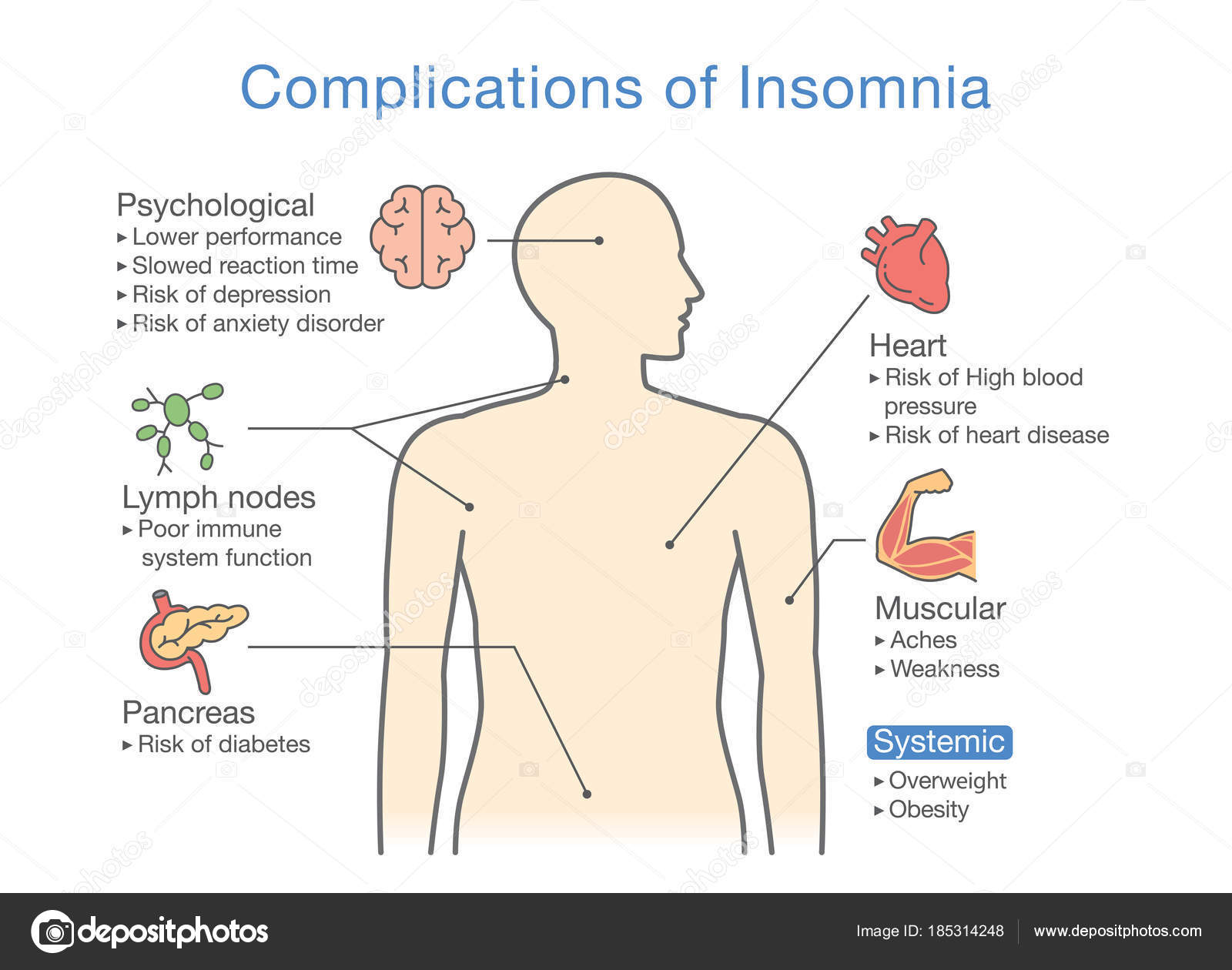
Interactions
Possible competition for alcohol dehydrogenase with drugs metabolized with its participation (retinoids).
Method of administration and doses
Inside, regardless of food intake, at strictly defined hours, adults and adolescents over 12 years old – 1 tab. (300 mg) or 15 ml of solution (in case of inability or inability to swallow tablets) 2 times a day, children from 3 months to 12 years old – 8 mg / kg of body weight 2 times a day, but not more than 600 mg.
Precautions
Monotherapy is not allowed. Only a specialist with experience in the treatment of HIV infection can prescribe the drug. Before starting active antiretroviral therapy, a complete clinical and laboratory examination of the patient is carried out, incl. the level of viral load on plasma and the number of CD4 + T-lymphocytes are determined. During treatment, regular (every 3–6 months) assessment of the level of the replication process, plasma viral load (determination of bDNA and RT-PCR) and the level of CD4+ cells is shown. In the presence of clinical symptoms of HIV infection, it is necessary to start therapy without taking into account the number of CD4 + cells and the level of viral load on plasma. The appearance of any signs of a hypersensitivity reaction (usually occurring in the first 6 weeks of treatment) due to their potential danger to life requires discontinuation (and further use of the drug is unacceptable). The patient should be warned that treatment does not reduce the risk of passing HIV to others.
In the presence of clinical symptoms of HIV infection, it is necessary to start therapy without taking into account the number of CD4 + cells and the level of viral load on plasma. The appearance of any signs of a hypersensitivity reaction (usually occurring in the first 6 weeks of treatment) due to their potential danger to life requires discontinuation (and further use of the drug is unacceptable). The patient should be warned that treatment does not reduce the risk of passing HIV to others.
Trade names with active substance Abacavir
Reset filters
Lek. form
All lek. Forms oral solution substance substance-powder tablets, coated tablets, film-coated
Dosage
All dosages 0.5-50 kg 150 mg 20 mg/ml 300 mg 600 mg No dosage
Manufacturer
All manufacturers AMEDART LLC Biochemist AO Bora Pharmaceutical Services Inc. BratskChemSynthesis LLC Glaxo Wellcome Operations Glaxo Operations Great Britain Limited GlaxoSmithKline Inc. GlaxoSmithKline Pharmaceuticals Dalchimpharm Plant named after academician V.P. Filatov LLC ZiO-Zdorovye Canonpharma production ZAO Kirov pharmaceutical th factory JSC MAKIZ-PHARMA LLC Mylen Laboratories Limited Ozon OOO Ozon Pharm OOO R-Pharm JSC R-Pharm CJSC Technology of Drugs Usolye-Sibirsky CPP JSC PharmVILAR NPO Pharmasyntez JSC Pharmoslavl ZAO Hetero Labs Limited Shanghai Shindek Pharmaceutical Co., Ltd. Advanced Pharmaceuticals LLC (Advanced Pharma LLC) Aysbright Pharma Pvt. Ltd. Erin Life Science Limited
GlaxoSmithKline Pharmaceuticals Dalchimpharm Plant named after academician V.P. Filatov LLC ZiO-Zdorovye Canonpharma production ZAO Kirov pharmaceutical th factory JSC MAKIZ-PHARMA LLC Mylen Laboratories Limited Ozon OOO Ozon Pharm OOO R-Pharm JSC R-Pharm CJSC Technology of Drugs Usolye-Sibirsky CPP JSC PharmVILAR NPO Pharmasyntez JSC Pharmoslavl ZAO Hetero Labs Limited Shanghai Shindek Pharmaceutical Co., Ltd. Advanced Pharmaceuticals LLC (Advanced Pharma LLC) Aysbright Pharma Pvt. Ltd. Erin Life Science Limited
Active substance ABACAVIR (ABACAVIRUM) | Compendium – drug reference book
- Pharmacological properties
- Indications ABAKAVIR
- Application of ABACAVIR
- Contraindications
- Side effects
- Special instructions
- Interactions
- Overdose
- Diagnosis
- Recommended alternatives
- Trade names
antiviral, synthetic carbocyclic nucleoside analog. Inside the cell, abacavir is converted with the participation of cellular enzymes into the active metabolite carbovir triphosphate. Carbovir triphosphate is an analogue of deoxyguanosine-5′-triphosphate (dGTP). Carbovir triphosphate inhibits the activity of HIV-1 reverse transcriptase, which is due to competition with the natural dGTP substrate and disruption of its integration into viral DNA. The loss of the 3′-OH group in the inserted nucleoside analog prevents the formation of 5- and 3-phosphoroester bonds necessary for DNA chain elongation. As a result, the growth of viral DNA stops.
Inside the cell, abacavir is converted with the participation of cellular enzymes into the active metabolite carbovir triphosphate. Carbovir triphosphate is an analogue of deoxyguanosine-5′-triphosphate (dGTP). Carbovir triphosphate inhibits the activity of HIV-1 reverse transcriptase, which is due to competition with the natural dGTP substrate and disruption of its integration into viral DNA. The loss of the 3′-OH group in the inserted nucleoside analog prevents the formation of 5- and 3-phosphoroester bonds necessary for DNA chain elongation. As a result, the growth of viral DNA stops.
After oral administration, absorption is high, bioavailability is 83%. C max – 3 μg / ml, time to reach C max – 1-1.5 hours AUC (within 12 hours after administration) – 6 μg / ml / h. Food slows down the absorption of abacavir and reduces C max in the blood, but does not affect AUC. Penetrates through the BBB, the concentration of abacavir in the CSF is 30-44% of that in the blood plasma. Plasma protein binding is low. It is metabolized in the liver with the participation of acetaldehyderogenase and the formation of glucuronide conjugates (5-carboxylic acid and 5-glucuronide). T ½ – 1.5 hours Excreted by the kidneys – 83% in the form of metabolites and 2% – unchanged; the rest is excreted through the intestines. Does not accumulate.
Plasma protein binding is low. It is metabolized in the liver with the participation of acetaldehyderogenase and the formation of glucuronide conjugates (5-carboxylic acid and 5-glucuronide). T ½ – 1.5 hours Excreted by the kidneys – 83% in the form of metabolites and 2% – unchanged; the rest is excreted through the intestines. Does not accumulate.
treatment of HIV infection (as part of combination therapy).
in combination with other antiviral agents inside adults 300 mg 2 times a day, children aged 3 months to 16 years – 8 mg/kg of body weight 2 times a day.
hypersensitivity to abacavir.
often – fever, skin rash, weakness, nausea, vomiting, diarrhea, abdominal pain, drowsiness, myalgia, arthralgia, edema, shallow breathing, paresthesia, general malaise.
Possible: lymphadenopathy, conjunctivitis, ulcerative lesions of the oral mucosa, maculopapular rash or urticaria, elevated liver enzymes, increased CPK or creatinine, lymphopenia; rarely – anaphylactic reactions, liver failure, kidney failure, arterial hypotension.
Medical supervision is required during the use of abacavir. At present, the delayed action of abacavir has not been established. With the development of allergic reactions, abacavir should be immediately discontinued.
Use during pregnancy and lactation. There are no adequate and well-controlled clinical studies on the safety of abacavir during pregnancy and lactation.
If it is necessary to use during pregnancy, the expected benefit of therapy for the mother and the potential risk to the fetus should be weighed.
It is not known whether abacavir is excreted in breast milk. If it is necessary to use during breastfeeding, the issue of stopping breastfeeding should be resolved.
The likelihood of a P450-mediated interaction of abacavir with other medicinal products is low. The drug inhibits the enzymes CYP 3A4, CYP 2C9 and CYP 2D6 at clinically relevant concentrations. Abacavir does not activate hepatic metabolism, therefore, the interaction of protease inhibitors and other drugs that are metabolized by major CYP enzymes is unlikely.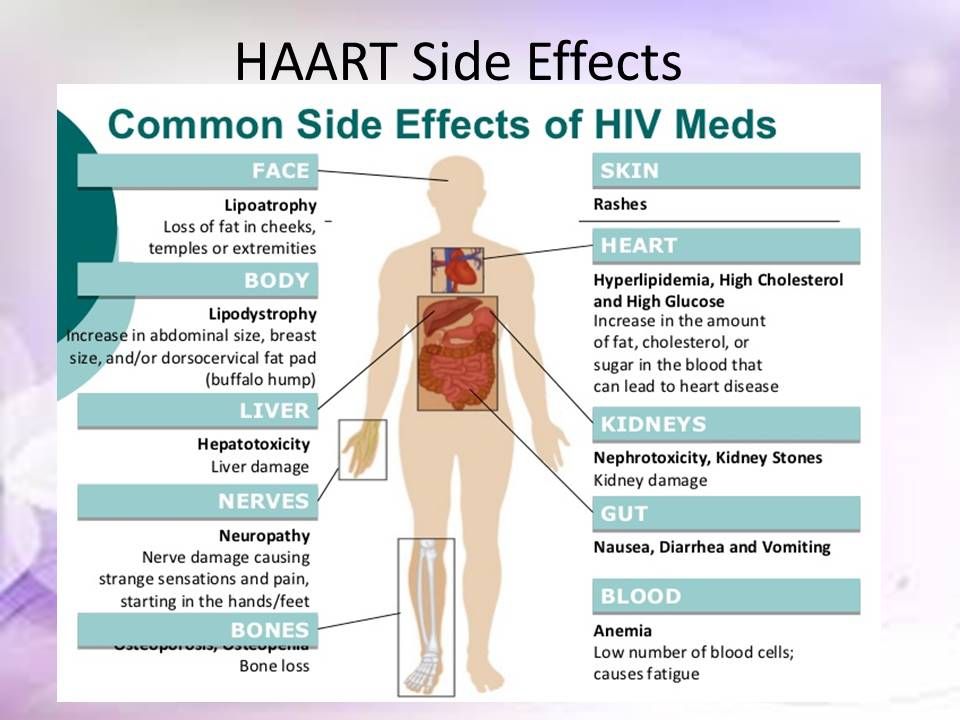


:max_bytes(150000):strip_icc()/side-effects-of-flagyl-metronidazole-1941759-FINAL-7b1b3d3abd1c4b7789af8de7e97386ab.png) gov search features, please see How to Search.)
gov search features, please see How to Search.)